I see skies of blue, ‘pink blossoms’ too and I think to myself, what a wonderful world… – how spring arrives in New Town
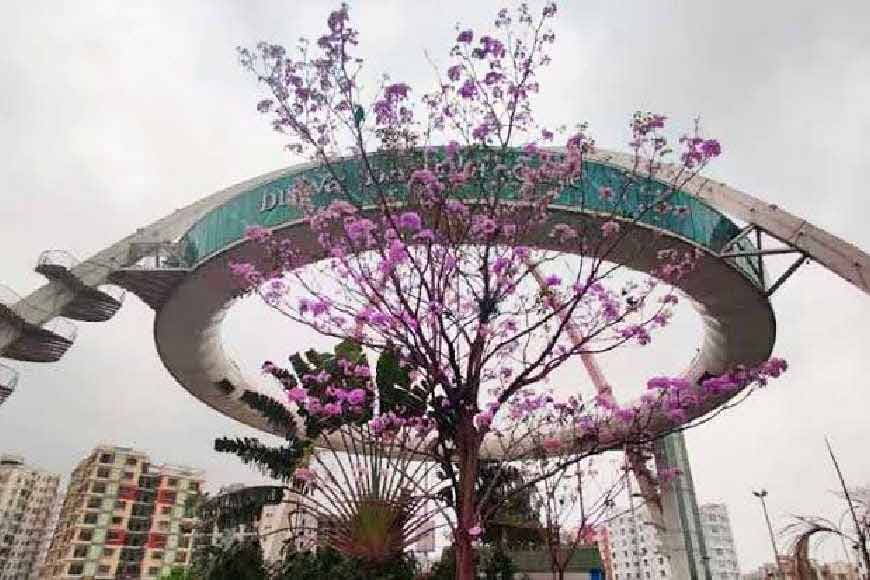
Despite the short span of spring in the Indian climate, the blazing blossoms of "Palash" offer themselves as the sole indicator of the blooming season ahead in Bengal. While Bengal is covered in red "Palash," a corner of Calcutta remains draped in pink trumpets akin to cherry blossoms, giving the city a springtime feel reminiscent of China, Japan, and Washington. The rosy cherry blossoms add a distinct shade to the surroundings, compelling people to stop and admire their subtle beauty.
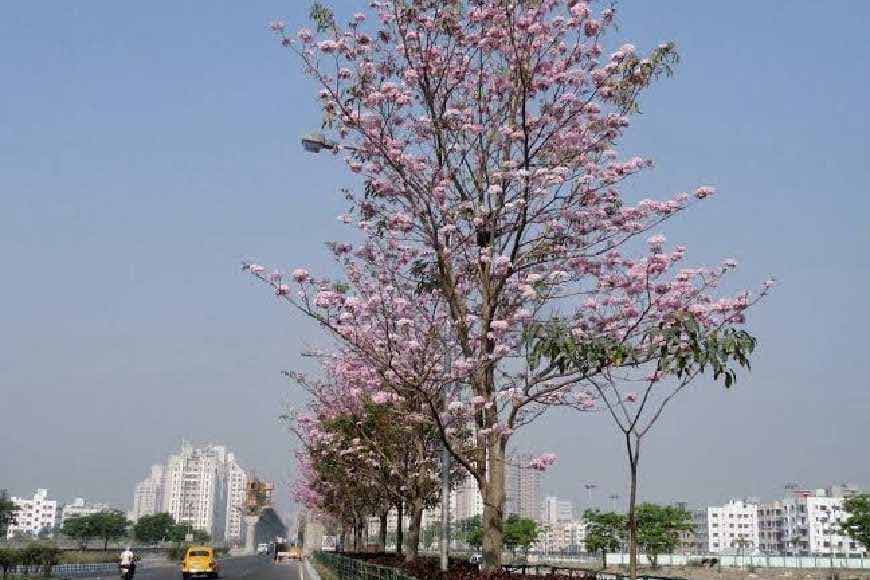
Cherry blossoms are one of the most recognisable flowers in the world, serving as a cultural icon and symbol of serenity for people all over the world. In Japan, these tiny pink flowers are produced by cherry trees, which bloom only for about two weeks in spring. Cherry blossoms herald the arrival of spring, hope, and rejuvenation for the Japanese. In a broader sense, because of their delicate nature and short lifespan, they are a stark representation of the impermanence of life and beauty. The symbolism of this flower differs greatly in China, where cherry blossoms represent feminine power, mystique, and beauty. They herald the arrival of spring and new life, just as the female ability to create and bear new life does.
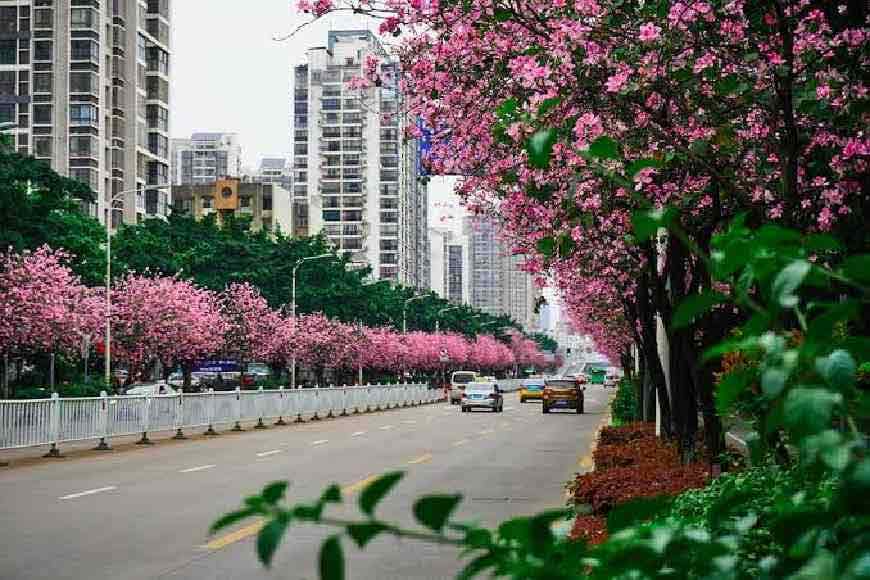
The cherry blossoms of Japan are found on the trees of the Prunus genus. The lifespan of the blossoms is the most notable feature. This species is distinct from the type of cherry blossom that grows in Japan, where it's known as sakura and celebrated as the country's national flower.
Also read : Wish to visit a Palash bon? Travel to Bankura
The trees in bloom in New Town are Tabebuia rosea varieties from the Bignoniaceae family. As per botanists, the TabebuiaRosea grows in tropical regions and yields pink blooms for at least a few months, unlike flowers of the Prunus family that last for about a week. According to some sources, as an experiment, the forest department planted about 1,000 of these trees alongside the artery and some of the adjoining service lanes in 2012–2013.
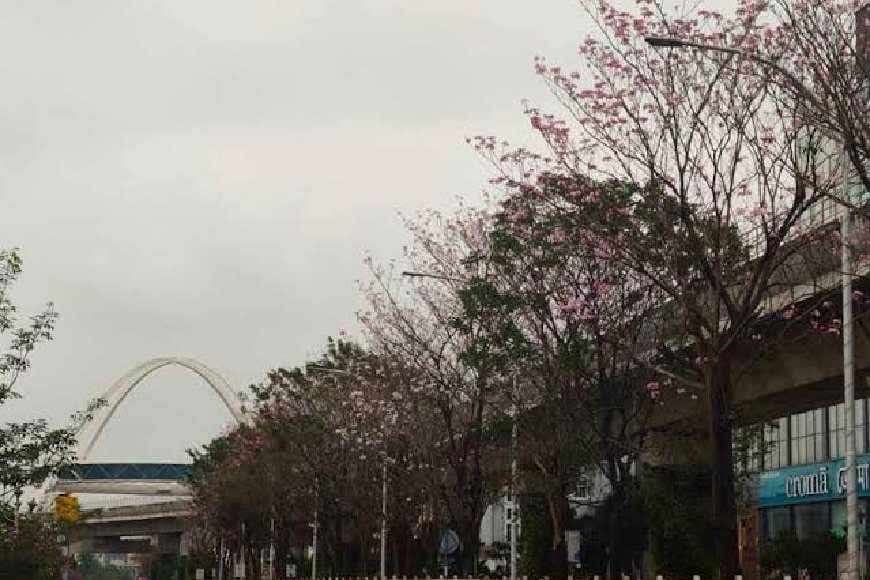
According to Mr. Debashish Sen, MD, HIDCO, “Ten years ago in New Town, a master plan was created with expert floriculturists and horticulturists to give each avenue a distinct floral identity. They intended to plant red, pink, green, and white flowering trees to name such avenues as 'Pink Avenue', 'White Avenue', and so on. They also planted the Tabebuia Rosea as a part of the master plan. However, the plan was derailed, because some of the flowering trees did not survive, possibly due to a combination of complex factors such as climate, adaptability to soil quality, pests or diseases, micropollutants, and so on. Despite the setback, Rosy Trumpet trees survived on the main avenue, especially from Narkolbagan to Box Bridge, and bloomed with beautiful flowers during March and April. These trees grow naturally, but NKDA occasionally provides water and fertilizer to those plants.”It's a testament to the resilience and creativity of the people involved in the project.
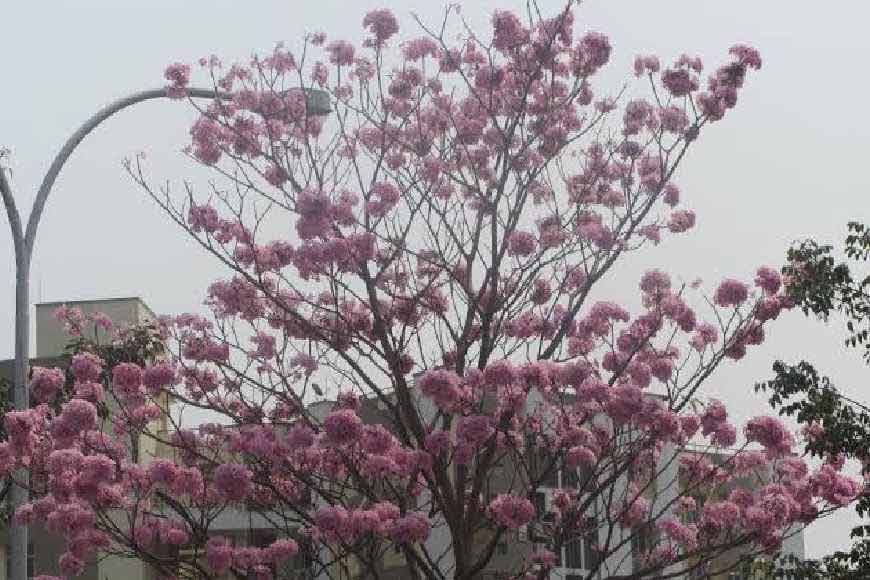
Moinak Dasgupta, a resident of Action Area 3, says, "Cherry blossoms in Newt Town teleport me to another world, and I see a different New Town with hues of white and pink."
The pink canopy of Rosy Trumpets provides aesthetic comfort to the areas of New Town. It's a nice change from the oranges of Rudrapalash and Palash, the reds of Semul and Gulmohar, and the yellows of Golden Trumpet and Amaltas. The rosy trumpets aren't going to be on display for long, but the effect they create is simply awe-inspiring.











